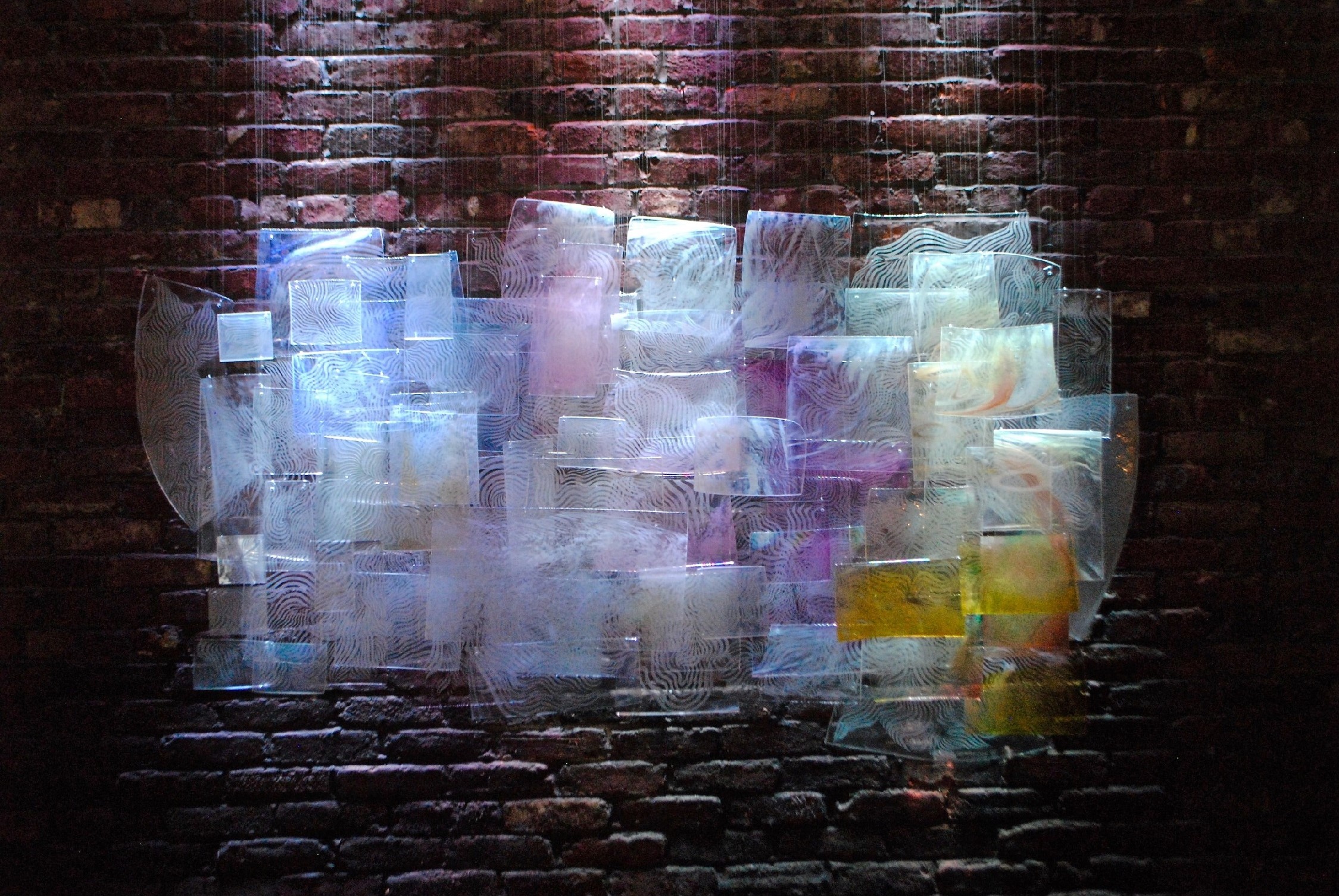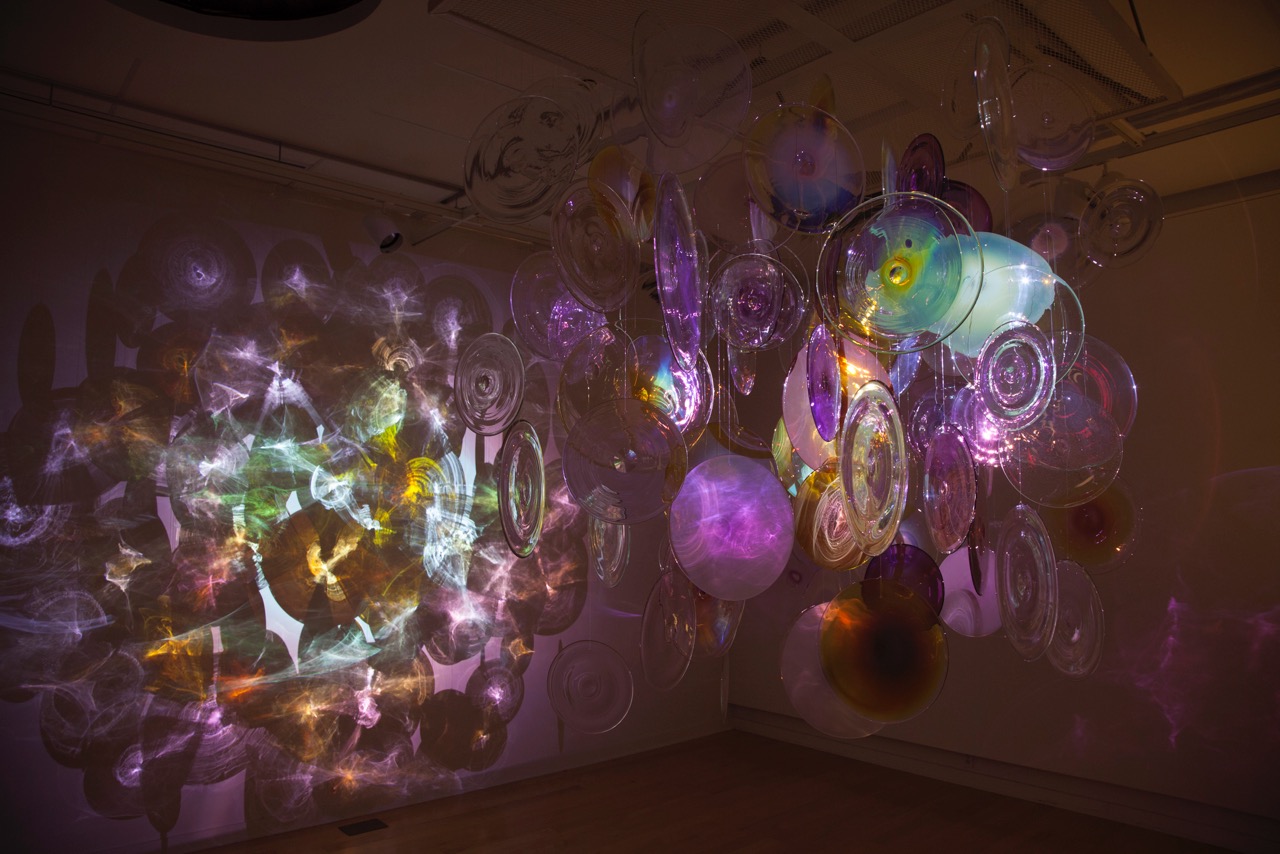“The optical quality of glass is my muse,” – Whitney “Bloom” Olsen.
"Rosy Retrospection" by Whitney Olsen in collaboration with Keegan Kruse, Light refraction photos, 7 - 22x22in frames, 2017, $500 each
Whitney Olsen, aka as Bloom, is a multi-dimensional artist working with glass, light, mixed media and “…multiple dimensions to indulge in the conversation of being.” If your first thought of glass art takes you to a place of vessels, Bloom’s work will upend those expectations.
“My work exists in the intersection between the corporeal and the imagination, where the fixed and infinite collide through tangible and intangible layers of energy. The optical quality of glass is my muse, translating our ephemeral understanding of the here and now through veiling multiple materials. Illusion is the gateway into my liminal world…”
"Absolute #3" by Whitney Olsen, Mixed media on wood, 58x30in, 2017, $1500
Bloom’s glass pieces are most often components in larger installation sculptures in which light is an active medium. The glass becomes a lens almost as assuredly as if we were peering through a kaleidoscope, and the work begins to shape the viewer’s perception of the environment the piece occupies.
“There is an energy that we possess that feels like butterflies fluttering inside us, it feels like we are going up to the top of a roller coaster. It’s an unsettled, scary but thrilling, anxiety that is beautiful and basic, and it’s so real because it’s your body telling you that you are alive. It’s called passion; the moment when you finally go outside of your comfort zone and you really start to listen to what you want, and you go for it. To be dangerous because it is necessary, and you are happy all the time since you are not missing out on what life has to offer because you are living the way you want to live. To be yourself; being wholly, soulfully, be-you-tifully YOU, like a flower. I want everyone to bloom.”
Since graduating from the Hite Institute at University of Louisville, Bloom has studied glass and neon at Penland School of Crafts and Pilchuck Glass School.
In 2017, Bloom exhibited as a part of Crossing Borders at the Huff Gallery at Spalding University, and had a solo show, Perennial Being at Tim Faulkner Gallery in Louisville.
Age: 25
Hometown: Crestwood, Kentucky
Education: BFA in 3-D Studios, Concentrations in Glass & Sculpture, University of Louisville, 2015
Website: www.whitneyolsen.com
Instagram: whitnaastyy
"Day Dreams" by Whitney Olsen, Blown, cold worked, slumped, etched glass, metal and light, 48x72in, 2015, $12,000
"Ethereal Study #3" by Whitney Olsen, Hand blown glass, video, dimensions vary, 2015, $8000
"TH(is) you and me and everyone else" by Whitney Olsen, Mixed media installation, dimensions vary, 2017
"Neon Bloom" by Whitney Olsen, Neon glass & painted plexi, 14x28in, 2017, $650
Written by Keith Waits. Entire contents copyright © 2017 Louisville Visual Art. All rights reserved.


































